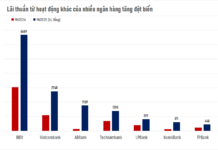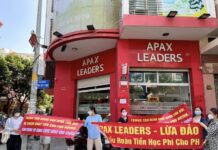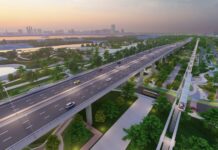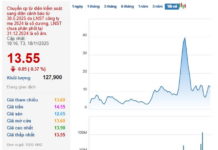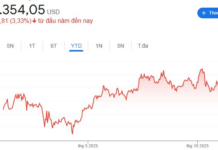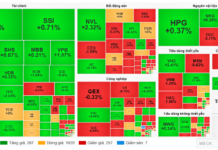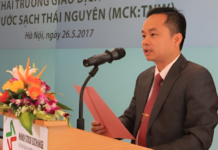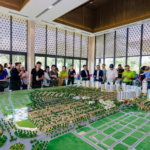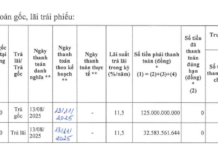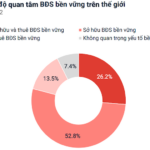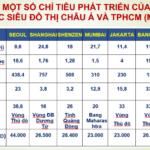According to market research data, Hanoi’s apartment supply structure is localized by area. The 2024 report by the Vietnam Association of Realtors reveals that 88% of apartment supply comes from projects in the East and West districts of Hanoi. CBRE’s Q3/2025 real estate market report indicates that new project launches are primarily concentrated in Tay Ho, Cau Giay, and Long Bien. Additionally, Hanoi’s apartment supply extends to neighboring areas such as Dan Phuong and Van Giang, Hung Yen (bordering Hanoi).
These figures highlight a supply-demand imbalance in the southern part of the capital, particularly in Hoang Mai and Thanh Tri, which boast robust connectivity infrastructure and vast green spaces. Yet, these areas account for a minimal share of the city’s high-end and luxury housing supply. Meanwhile, land in the West (Cau Giay, Nam Tu Liem) and the city center is nearly depleted after a decade of rapid development. As the trend toward green living becomes increasingly essential, the elite are shifting away from congested areas to seek greener surroundings. So, why does the South, with its immense potential, lack luxury projects?
The Luxury Gap: When Supply Doesn’t Meet Demand
Mr. Bui Trong Nguyen, Director of a real estate agency in the South, explains that the absence of luxury projects is not due to a lack of developments but rather a lack of high-caliber offerings. Data from CBRE and Savills Vietnam shows that over the past decade, the South’s real estate landscape has been dominated by mid-range and near-luxury segments, catering to the practical needs of the majority. While large-scale projects are abundant in areas like Hoang Mai, Thanh Tri, and Linh Dam, genuine luxury offerings remain virtually nonexistent.
“Luxury isn’t just about price; it’s about low-density construction (typically under 30%), premium finishing standards, exclusive amenity ecosystems, 5-star management services, and unique architectural philosophies. This is the gap the South’s market is missing,” Mr. Nguyen emphasizes.

Despite its vast land availability, South Hanoi lacks high-caliber luxury projects.
Experts identify two primary reasons for this gap. First, during the 2010-2020 decade, major real estate players focused heavily on the West (My Dinh, Cau Giay) to capitalize on the new administrative center’s planning, sidelining the South as a secondary market. Second, developing luxury projects requires long-term vision, substantial financial resources, and a willingness to sacrifice short-term profits for low-density, landscape-focused designs. Stringent legal and infrastructure standards further limit developers’ interest in luxury real estate in the South.
This has resulted in a supply-demand mismatch in the South. Demand for high-quality products is significant, but the supply of luxury offerings remains scarce. A quick survey shows that the total number of high-end and luxury projects in South Hanoi consistently accounts for less than 10% of the city’s total supply, with absorption rates exceeding 90% upon launch. The shortage of quality supply, coupled with the region’s growing intrinsic strengths, creates a tightly compressed “spring,” ready to unleash upon the arrival of a project of sufficient caliber.
A Spectacular Transformation: The “Golden Triangle” Ignites the South’s Potential
The South is poised for a breakthrough, driven by a “golden triangle” of infrastructure, ecology, and capital migration, positioning it as a new living hub.
The first and most transformative factor is infrastructure. Five years ago, transportation was the South’s weakness, but now it’s its greatest growth driver. Multi-billion-dollar infrastructure projects are reshaping the region: the accelerated Ring Road 2.5 (Dam Hong – QL1A section), the ongoing Ring Road 3.5, and future Metro lines (No. 2, No. 8) will create a multi-layered connectivity network.
Crucially, central axes like Giai Phong, Nguyen Xien, and Nguyen Huu Tho are being expanded, reducing travel time from the South to central Hoan Kiem and the West (Cau Giay). The region’s strategic position as the “Southern Gateway” (linking Hanoi with Ha Nam, Ninh Binh, and Hung Yen) further enhances its importance.
The second advantage is its ecological environment—an irreplaceable asset. While the West is congested with concrete, the South boasts one of the highest ratios of greenery and water bodies in the capital. Massive “green lungs” like Linh Dam Lake, Yen So Park (323ha), and Chu Van An Park (100ha) form a natural ecological belt. This attracts wealthy individuals, entrepreneurs, and expatriates who prioritize green, serene, and health-focused living.
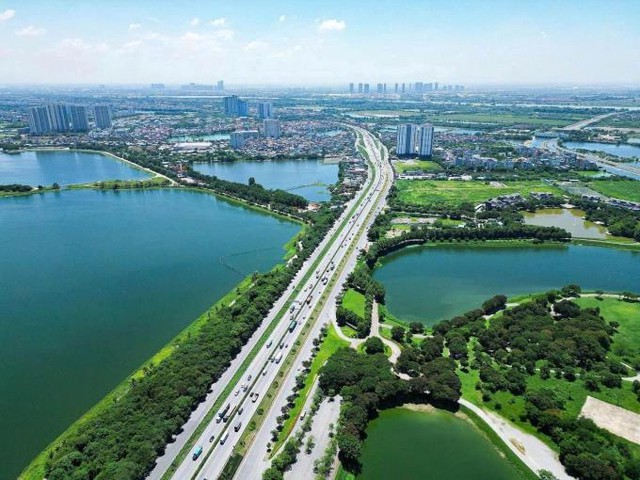
South Hanoi’s dense network of lakes offers a tranquil and pleasant living environment.
The third factor is capital migration. Accelerated infrastructure and ecological advantages have triggered a shift in luxury buyers’ preferences. They are no longer solely seeking central locations but are prioritizing genuine living spaces. They are moving from the saturated West to the South, where beautiful land remains available and planning is cohesive, in search of projects with transparent legal frameworks and sustainable growth potential.
A Billion-Dollar Gap and the Opportunity for Pioneers
The South’s market is in a “compressed” phase, awaiting a landmark project with a unique architectural philosophy, genuine construction quality, and the scale to lead the market. This is no longer a game for the masses but for developers with strong financial capabilities, long-term vision, and a deep understanding of the elite’s preferences.
Experts predict that the first developer to fill this gap will seize a golden opportunity. They won’t just achieve high sales absorption rates but, more importantly, will establish their brand and set a new standard for elite living in the entire Southern gateway of the capital.
Once considered a “neglected potential,” South Hanoi is now transforming with positive signals in infrastructure, planning, and environmental quality. The synergy of these factors is positioning the region as a prominent destination for luxury and high-end real estate on Hanoi’s property map in the near future.
$4.5 Billion Metro Lines Set to Transform Ho Chi Minh City’s Gateway, Boosting Local Real Estate Market
The Metro Line No. 1 (Binh Duong New City – Suoi Tien) and Metro Line No. 2 (Thu Dau Mot – Ho Chi Minh City) are prioritized for early investment, with a combined total investment of over $4.5 billion.
Real Estate Investment Flow Shifts Southward
Several real estate segments in Hanoi have approached their peak. Consequently, experts suggest that investors are turning their attention to the southern region’s real estate market, where growth potential and price appreciation opportunities remain significant.





